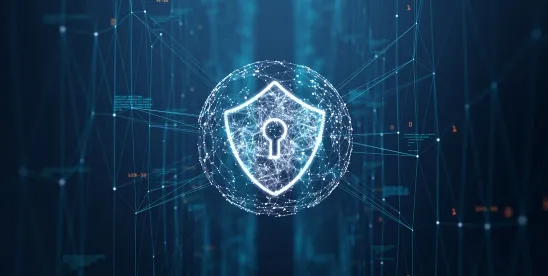On May 19, 2025, President Trump signed into law the Take It Down Act (“Act”), which bans the nonconsensual online publication of sexually explicit images and videos that are both authentic and computer-generated, and includes notice and takedown obligations for covered online platforms.
Below is a summary of key aspects of the Act.
Authentic Imagery and Digital Forgeries
Authentic Imagery. With respect to intimate visual depictions that are authentic and involve adults, the Act makes it unlawful for any person to use an interactive computer service to knowingly publish a depiction of an “identifiable” adult (e.g., based on a distinguishing characteristic such as a birthmark or recognizable feature) if: (1) it was obtained or created under circumstances in which the person knew or reasonably should have known the adult had a reasonable expectation of privacy; (2) what is depicted was not voluntarily exposed by the adult in a public or commercial setting; (3) what is depicted is not a matter of public concern; and (4) publication of the depiction is intended to cause harm or causes harm, including psychological, financial or reputational harm, to the identifiable individual. Regarding minors, the Act makes it unlawful for any person to use an interactive computer service to knowingly publish an intimate visual depiction of an identifiable individual minor with intent to abuse, humiliate, harass or degrade the minor or arouse or gratify the sexual desire of any person.
Digital Forgeries. The Act also makes it unlawful for any person to use an interactive computer service to knowingly publish a digital forgery of an identifiable adult if (1) the digital forgery was published without the consent of the adult; (2) what is depicted was not voluntarily exposed by the identifiable individual in a public or commercial setting; (3) what is depicted is not a matter of public concern; and (4) publication of the digital forgery is intended to cause harm, or causes harm, including psychological, financial or reputational harm, to the adult. Regarding minors, the Act makes it unlawful for any person to use an interactive computer service to knowingly publish a digital forgery of an identifiable minor with intent to abuse, humiliate, harass or degrade the minor, or arouse or gratify the sexual desire of any person.
Threats. The Act also makes unlawful certain threats to commit the unlawful offenses described above.
Exceptions. The Act contains certain exceptions, such as for a lawfully authorized investigative, protective or intelligence activity of government law enforcement and intelligence agencies; a disclosure made reasonably and in good faith to law enforcement, as part of a legal proceeding, for a legitimate medical, scientific or education purpose, in the reporting of unlawful content or unsolicited or unwelcome conduct, or to seek support with respect to the receipt of an unsolicited depiction; a disclosure reasonably intended to assist the identifiable individual; a person who possesses or publishes an intimate visual depiction of himself or herself engaged in nudity or sexually explicit conduct; or the publication of an intimate visual depiction that constitutes child pornography (as defined in 18 U.S.C. § 2256) or a visual depiction relating to obscene visual representations of the sexual abuse of children (as defined in 18 U.S.C. § 1466A).
Notice and Takedown Provisions
The Act also requires “covered platforms” (including certain websites, online services, online applications and mobile applications) to establish a process whereby an individual (or an authorized person acting on their behalf) may notify the covered platform of an intimate visual depiction published on the covered platform that includes the individual and was published without the individual’s consent to request removal of the depiction. Upon receiving a valid removal request, covered platforms must, within 48 hours of receiving the request, remove the intimate visual depiction and make reasonable efforts to identify and remove any known identical copies of the depiction. The Act provides that these provisions will be enforced by the Federal Trade Commission.
Penalties
Remedies for noncompliance with the Act include restitution and criminal penalties including fines and imprisonment not more than two years (or three years for offenses involving minors).



 />i
/>i

